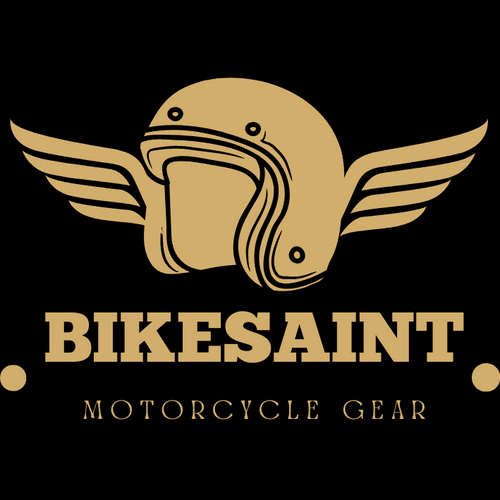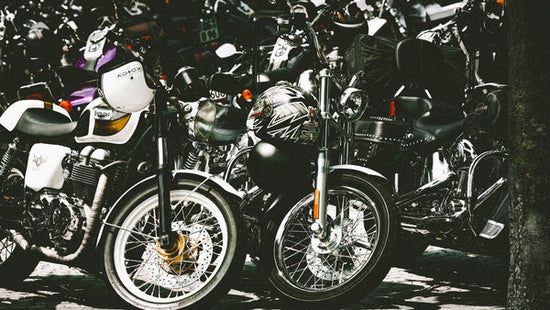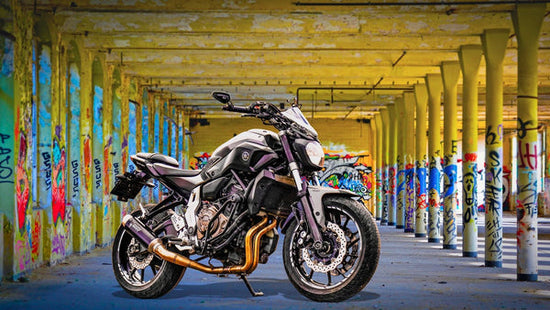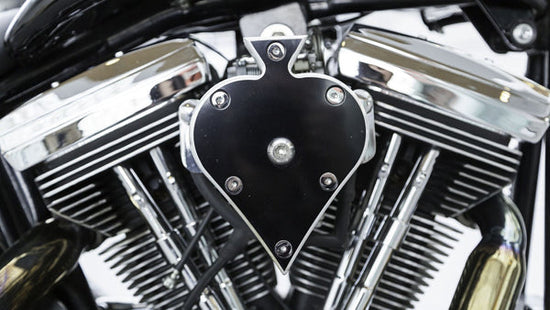

Motorcycles have been around since the 19th century, and have since become an icon of freedom, speed and adventure. From the earliest models to the most modern, they have shaped the way we travel and experience the world around us. In this article, we’ll take a look at the history of motorcycles and how they developed over time.
Overview of History
The history of motorcycles is long and varied, with new models and designs being developed over time. From the earliest steam-powered models to the most modern, motorcycles have had a significant impact on the way we travel, explore and experience the world. With a wide variety of models and designs, motorcycles offer riders the ultimate freedom and sense of adventure.
Beginnings of Motorcycles
The earliest motorcycles were powered by a steam engine and were first manufactured in 1885. The first motorcycle was a steam-powered invention called the “Daimler Reitwagen” and was invented by Gottlieb Daimler and Wilhelm Maybach in Germany. Motorcycles quickly gained popularity, with many different manufacturers creating their own models.
The development of motorcycles also led to the invention of the internal combustion engine. The first successful internal combustion engine motorcycle was created in 1894 by Hildebrand & Wolfmuller. This motorcycle had a 2-cylinder, 4-stroke engine and was capable of reaching speeds of up to 55 mph. This invention revolutionized transportation, and the internal combustion engine quickly became the most popular type of engine for motorcycles. This revolutionary invention led to an explosion of motorcycle manufacturers, as many different companies began to develop and manufacture their own models. By the late 19th century, there were many different types of motorcycles available, ranging from small, lightweight models to powerful and fast “cruiser” motorcycles.

Motorcycles in the 20th Century
In the early 20th century, the motorcycle industry underwent a rapid transformation. During the 1920s, more powerful and luxurious models were produced, and during the 1930s and 1940s, motorcycles became popular with both military and civilian riders. This popularity continued into the 1950s, with the introduction of the first Japanese motorcycle companies. With their advanced designs and affordability, these Japanese companies quickly took the industry by storm and dominated the motorcycle market in the 1960s and 1970s.
Over the years, motorcycles have evolved and developed into the powerful and stylish models that we know today. Manufacturers have continued to innovate and improve their designs, resulting in motorcycles that are faster, more powerful, and more stylish.

The effects of motorcycle racing on popularity of motorcycle riding
Motorcycle racing has long been an important part of the motorcycle industry. Motorcycle races such as the Isle of Man TT, the MotoGP and the Superbike World Championship attract millions of viewers and have helped to increase the popularity of motorcycle riding all over the world. These races have helped to promote the sport, showcasing the latest technology and pushing the boundaries of performance. In addition, these races often feature some of the most talented riders in the world, inspiring future generations of riders to take up the sport and driving the industry forward.
Motorcycles in the 21st Century
Today, motorcycles remain popular with riders all over the world. They are used for a variety of purposes, from commuting to long-distance touring. Motorcycles have become much more reliable, with modern models boasting advanced features such as electronic fuel injection, antilock brakes, and traction control. Motorcycle riders now have the freedom to choose from a wide range of models, from lightweight scooters to powerful touring motorbikes. With their unique combination of freedom, power, and style, motorcycles continue to be a popular form of transportation.
Technology and Performance
Motorcycle technology has come a long way in the past century, and new motorcycles are now capable of reaching speeds of up to 200 mph. Manufacturers continue to develop advanced features that offer improved performance and safety. From sophisticated traction control systems to powerful engine management systems, today’s motorcycles are more powerful and reliable than ever before. Motorcycles are now available in a wide range of styles, from sleek and sporty models to stylish and luxurious touring motorbikes, from small and agile scooters to powerful and stylish cruisers.
Motorcycles are now constructed from a variety of components to ensure performance and safety. With the availability of these components, riders can customize their motorcycles to meet their individual needs and preferences. High-performance parts and accessories are also available to deliver even greater power and agility.
The variety of components and customization options available today make it easy to find a motorcycle that is perfect for any rider. Whether you are looking for a lightweight scooter or a powerful touring motorbike, the modern motorcycle industry has something for everyone. With a range of options and the ability to customize your ride, there has never been a better time to get on a motorcycle and explore the world.
Future of Motorcycles
The future of motorcycles looks bright. With new technology and innovations being developed every day, it’s likely that the next generation of motorcycles will be even more powerful and advanced than today’s models. Manufacturers are also looking for ways to reduce emissions and be more environmentally friendly, creating motorcycles that are more efficient and sustainable. As motorcycles continue to evolve, riders will have even more choice and freedom when it comes to selecting the perfect model for their needs.
Conclusion
From its humble beginnings to its modern-day sophistication, the motorcycle has come a long way. Motorcycles continue to be a popular form of transportation, and thanks to today’s advanced technology, they are more powerful and stylish than ever before. With the future of motorcycle technology looking bright, riders can look forward to even more power and performance in the years to come. However, if it is old motorbikes your heart is beating for, check out our blog on the difference between vintage and classic motorcycle.
Summary of History
The story of the motorcycle begins with the invention of the internal combustion engine in 1885. This was followed by the introduction of the first commercially successful motorcycle, the Indian Motorcycle, in 1901. The first large-scale production of motorcycles was in 1903 with the introduction of the Harley-Davidson. Since then, motorcycles have continued to evolve and now feature advanced technology, such as electric motors and 3D printing. Today, electric motorcycles are becoming increasingly popular.
Facts:
1. The first internal combustion powered motorcycle was created in 1885 by Gottlieb Daimler and Wilhelm Maybach.
2. In 1901, the first commercially successful motorcycle, the Indian Motorcycle, was introduced in America.
3. The first large-scale production of motorcycles was in 1903 with the introduction of the Harley-Davidson, which was created in Milwaukee, Wisconsin.
4. In 1914, the Indian Motorcycle Company introduced the first V-twin engine.
5. The first Honda motorcycle was released in 1949 and it was the first to use an overhead camshaft.
6. The first Kawasaki motorcycle was released in 1962. It was a 125cc two-stroke.
7. In 1969, the first production motorcycle to feature a four-stroke engine was the Honda CB750.
8. The first production electric motorcycle was the Vectrix scooter, released in 2006.
9. In 2013, the world's first 3D printed motorcycle was unveiled by Ikea.
Modern Motorcycle Culture
Motorcycles have become much more than just a mode of transportation, they have become a part of modern culture. From motorcycle clubs to custom builds, motorcycles have become a way of life for many people around the world. Motorcycle clubs have been around for decades and have become a popular way for people to connect and share their love of riding. Custom builds have become increasingly popular in recent years, allowing riders to personalize their motorbikes to suit their individual style. With the ever-growing selection of parts and accessories available, the possibilities are endless.
No matter if you’re a veteran rider or a beginner, motorcycles can offer a thrilling, unforgettable experience. Whether you’re looking for a weekend getaway or a daily commuting option, riding a motorcycle can provide a unique feeling of freedom and adventure. With new advancements in technology, the motorcycle industry is constantly evolving, making it easier for riders to find the perfect motorbike for their needs. From vintage classics to modern powerhouses, there’s something for everyone in the world of motorcycles. So, no matter what your level of experience, there’s a motorbike out there that’s perfect for you.
What was the first motorcycle ever made?
The first motorcycle ever made is widely considered to be the Hildebrand & Wolfmüller. This two-wheeled machine was created by German inventors Alois Wolfmüller and Heinrich and Wilhelm Hildebrand in 1885. This revolutionary vehicle was powered by a four-stroke, 1488 cc engine and boasted a top speed of 28 mph. On top of that, it was fitted with a modern carburetor, an electric ignition system, and even a clutch and kick-starter. The Hildebrand & Wolfmüller set the stage for modern motorcycling, and was the first commercially available two-wheeled motorized vehicle.
When was the first production motorcycle released?
The first production motorcycle was released in 1894 by German inventors Hildebrand & Wolfmüller. It was powered by a four-stroke 1488 cc water-cooled four-cylinder engine and had a top speed of 28 mph. The first production model was known as the "Victoria" and was produced in Munich, Germany. It was a revolutionary invention and the first of its kind to be used for transportation.
What are the most important milestones in the history of motorcycles?
Some of the most important milestones in the history of motorcycles include the invention of the first internal combustion motorcycle in 1885, the invention of the first Harley-Davidson in 1903, and the launch of the first Moto Guzzi in 1921. Additionally, the introduction of the modern-day motorcycle with an electric starter in 1907 was a huge game changer, as it made motorcycles easier to use and more accessible to the general public. Finally, the introduction of the first dual-sport motorcycle in the 1960s revolutionized the industry, as it allowed riders to go off-road and explore more challenging and varied terrain.
What are some of the oldest motorcycle manufacturers?
The motorcycle industry has a long and varied history. Some of the oldest motorcycle manufacturers are Indian Motorcycles, founded in 1901; Harley-Davidson, founded in 1903; Royal Enfield, founded in the UK in 1901; and Triumph Motorcycles, founded in 1902. Each of these iconic brands has a long and interesting history, and continues to produce quality motorcycles to this day.
What role did motorcycles play in World War I and World War II?
Motorcycles played an important role in both World War I and World War II. In World War I, motorcycles were used as scouts or dispatch riders to carry messages between officers and soldiers on the front line. They also served as ambulances on the battlefield, transporting injured soldiers to safety. In World War II, motorcycles were used in many of the same ways, but also for reconnaissance and to carry out reconnaissance missions. They were also used to patrol the front lines, often alongside armored vehicles. Motorcycles were also used in non-combat roles, such as transporting personnel and supplies, and even as a means of delivering mail to the troops. Motorcycles were an essential part of both world wars, and helped to keep the troops connected and informed.
What are the most popular motorcycle brands of all time?
There are many different motorcycle brands to choose from, but some of the most popular and iconic brands of all time include Harley-Davidson, Honda, Yamaha, Suzuki, Kawasaki, and Ducati. Each of these motorcycle brands have a unique history and style that has made them popular and iconic over the years. Harley-Davidson is known for its unique look and loud exhaust sound, Honda for its reliable and efficient engines, Yamaha for its sporty and powerful motorcycles, Suzuki for its affordable and versatile models, Kawasaki for its cutting-edge technology, and Ducati for its Italian styling and racing heritage.












